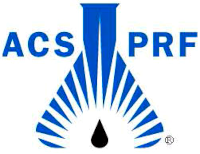![]()
Charge-transfer complexes, also known as electron donor-acceptor (EDA) complexes, involve the association of an electron-rich substrate (donor) and an electron-poor substrate (acceptor) in the ground state. While the individual substrates may not absorb in the visible region, the charge-transfer complex often does, creating a new alternative to initiate redox reactions with visible light irradiation. While these methodologies have proven useful, they often require stoichiometric amounts of specifically tailored substrates, limiting the overall scope of these transformations. In order to increase the generality of this approach, the Pitre lab is focusing on developing catalytic systems for charge-transfer photochemistry, which include the use of hydroquinone catalysts that activate alkyl halides towards visible-light irradiation through halogen-bonding interactions.
Relevant Publications
Tarannum Tasnim, Calvin Ryan, Miranda L. Christensen, Christopher J. Fennell and Spencer P. Pitre*. Radical Perfluoroalkylation Enabled by a Catalytically Generated Halogen Bonding Complex and Visible Light Irradiation. Organic Letters 2022, 24, 446-450.
We would like to thank the following funding agencies for supporting this work:

